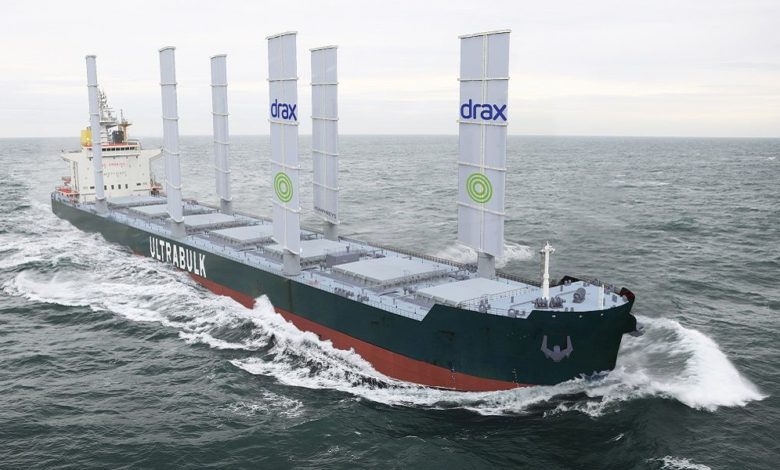Blowing away barriers on International Day for Women in Maritime

Shipping’s ambitious goals have created unique opportunities for women across industries to bring their experience and skills to support maritime’s evolution, writes Diane Gilpin, CEO of Smart Green Shipping.
Industrial sectors are increasingly vying to attract individuals with the necessary skill-sets and aptitude to drive their businesses forward. With its ‘salty sea dog’ reputation, shipping has traditionally been a closed shop to women. The industry has squandered the opportunity to attract valuable talent which, in turn, has restricted its growth potential.
More recently, concerns about recruitment and retention, allied with the pace of change resulting from digitalisation and decarbonisation programmes, have compelled the industry to consider a hitherto largely untapped woman-power pool. According to a joint IMO-Women’s International Shipping & Trading Association (WISTA) survey published in 2021, women accounted for only 29% of the total workforce and a huge discrepancy was identified between shore-based and seafaring roles, with women making up just 2% of ships crews, mostly concentrated in the cruise sector.
While I welcome efforts to diversify the salaried workforce, I believe entrepreneurial women can also find a home in the maritime industry. After recognising a commercial opportunity to fuse my passion for the environment, technology and systems design, I established a start-up, Smart Green Shipping (SGS), in 2014 to develop physical and technical solutions to reduce emissions from the global shipping industry.
Together with my team of specialists – with backgrounds in shipping, high value manufacturing, data science and finance – we work across the spectrum of shipping stakeholders to design environmentally, commercially and technically viable ships. Drawing on my Formula One, yacht racing and wind farm experience, much of our focus has been directed to the development of our ground-breaking FastRig technology to harness wind power, as part of a sustainable hybrid solution for ship propulsion, as shipping transitions to a decarbonised future.
However, the challenges for start-ups, in any sphere, are particularly acute for female CEOs, primarily because the majority of venture capitalists are male – and female led start-ups are burdened by bias. I recall an article written as recently as 2019 which suggested that, “female entrepreneurs are 63% less likely than men to get funding for their ventures.” This continues to be a major obstacle despite the fact that evidence shows that women are delivering better results.
I have personally experienced this phenomenon. At the kick-off meeting of SGS’ InnovateUK supported project: ‘Winds of Change’, I was the only woman in a room of 18 people. Unfortunately, this is still more often the case than not. I could point to a technological pedigree that included being on the launch team for the UK’s first cellular telephone system, working for several motor racing teams, managing a Formula Three team and Offshore Yacht racing teams and pioneering onshore renewable energy, wind power and anaerobic digestion, and can therefore only imagine how much more difficult it must be for entrepreneurial women at the other end of their career curve.
I now sit on the Department for Transport’s Clean Maritime Council and the EU’s Waterborne Green Shipping Expert Group, with an active role in informing debate and pushing for sustainable change. While personal achievements and accolades are cherished, my true calling is driving SGS forward with my wonderful team. To this end, we have raised £10m over the last 15 months, thereby proving that success is built on fortitude, as well as a good idea properly executed, and a sliver of luck finding the right backers at the right time.
All successful CEOs blend innovation with resilience. We also need to be self-motivated, agile enough to overcome challenges and able to inspire others. We need to understand our products and markets and demonstrate business acumen, often under immense pressure, to sustain and grow our businesses. Such strengths are not unique to men.
I realise, however, that I am one of the few female CEOs operating in the maritime environment and believe the maritime industry should do more. Innovative concepts and professional competence must trump gender. Women can be successful in the industry but we should not have to work harder to achieve it. Ultimately, casting the recruitment net wider is the best way to attract the talent the industry needs to both address the climate emergency and support sectoral growth. Rosie the Riveter, a wartime cultural icon, demonstrated what could be achieved if the entire workforce is mobilised in the face of adversity. To prevail, the order of the day must be ‘all hands to the pumps’.

Truely an exasperating phenomenon, when the solutions have been thwarted by extreme reluctance of companies to promote females in the marine industry to leadership roles on the ships. There’s a “concrete ceiling “.
Models for breaking these barriers can be learned from the work the US NAVY had done since the early 1980s implementing policies and enforcing compliance which was very successful. It went through very difficult challenges and eventually found solutions.
I’ve recently learned that the large offshore company I work for , EdisonChouest, has 1% of wonen as vessel crews and only ONE female as Master , on the one of their 300 vessel’s??? Shocking really in this day and age. Women come with enthusiastic vision and eventually leave because they are not respected or promoted as leaders in Engine or Bridge departments. Always complaining about being short handed.
Caryn vonBlankenburgSiegfried